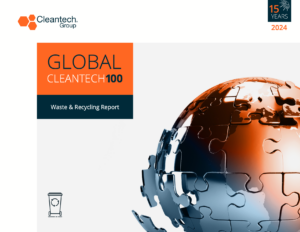Opportunities for EU SMEs to Decarbonize Canada’s Corporates: Bell Canada
From emissions reduction to the circular economy, Canada is quickly emerging as a front-runner in the transition to net-zero. The country has set a target of reducing emissions to 40-45% below 2005 levels by 2030, and a goal of being net-zero by 2050. To achieve this, corporate players are continually finding ways to reduce greenhouse gas emissions (GHG) with disruptive technologies.
The European Union (EU) funded program, Low Carbon Business Action Canada (LCBA) is a platform to accelerate the presence of EU solution providers of low carbon- and circular economy-related technologies in Canada. It aims to promote the Paris Agreement on Climate Change goals, using a business opportunity-driven approach.
This project has a three-track approach to accelerate the matchmaking and closure of business deals between Canadian buyers and EU innovators:
- Sector mapping and pre-screening of the business landscape targeting GHG emission’s sectors in Canada and mapping the business opportunities between potential Canadian buyers of EU green technologies.
- Matchmaking through a Challenge Pitch, designed to showcase several technology and business options from EU suppliers to Canadian demand companies. The shortlist of best-suited EU suppliers rests with the local Canadian buyer, in line with a demand-side approach.
- Provision of technical assistance to commercially viable and bankable proposals that complete a Joint Business Concept (JBC).
This program is a perfect opportunity for Europe’s small- to medium-sized enterprises (SMEs) to engage Canadian corporates looking to pilot innovative solutions, with access to EU technical assistance. So far, this program has led to 17 joint business agreements between EU SMEs and Canadian corporates.
Bell Canada is supporting the latest round of challenges, seeking EU SME solutions to improve energy management, minimize energy consumption, and reduce its carbon footprint in the company’s 4,600 buildings and shelters housing telecom and IT equipment.
Bell is committed to making its operations carbon neutral by 2025 and to achieving a science-based emissions reduction (SBT) target by 2030 in accordance with the 1.5°C warming scenario.
Bell seeks adapted technological solutions in order to achieve its ambitious targets, while meeting objectives of growth and sustainability for its network. The company wants to adopt a strategy of deployment and integration of new technologies, combining reliability and efficiency, for some or all of the 4,600 buildings and shelters.
Current Bell Canada Innovation Challenges include:
Rationale: Renewables may be integrated with utility power in order to reduce Bell’s carbon footprint. Renewable sources can include solar, wind energy, on-site hydrogen production and storage with fuel cells, etc.
Constraints: Power usage in Bell buildings is typically too high to rely only on renewables, limited space for “green” infrastructure such as solar panels.
Rationale: Fuel cells may offer an alternative to diesel fuel for emergency power generation. Different fuel cell technologies may be proposed, with varying fuel sources.
Constraints: Desired autonomy is 24 to 48 hours; limited space for aboveground gas storage (as required for hydrogen fuel cells).
Rationale: Battery storage may be used to reduce utility consumption during peak hours; battery storage may be used to respond to peak demand for electric vehicles during recharge (5 sites requiring between 1.2 MW down to 400 KW if power sharing is in place).
Constraints: Desired autonomy shall be as required to cover the peak hours.
Rationale: Waste heat from telecom / IT equipment is discharged to the atmosphere; it could be used to heat the building or to produce electricity (e.g., Organic Rankine Cycle).
Constraints: Output temperature from cooling systems is typically 35°C (95°F), with some systems such as heat pumps having an output temperature of 60°C (140°F).
Rationale: Bell is seeking solutions to improve energy management in the buildings, server rooms, and other related equipment used to support the network, thus minimizing overall energy consumption and the environmental footprint of Bell’s operations.
Does your business qualify? If your company is headquartered in the EU, has less than 500 employees, and under €300M in annual turnover, then you qualify! There is no need for experience in markets outside of the EU — a team of advisors will help facilitate discussions with the Canadian corporates for a seamless process.
Cleantech Group is constantly updating the Innovation Challenge Hub with many challenges across global markets, including LCBA Canada Challenges. Whether you are looking to scale your innovation or you need ideas, resources, and advice to take your start-up or scale-up to the next level, you can search for and find opportunities to work with corporates, investors, accelerators, and programs dedicated to helping us create a cleaner, cooler future. Filter by sector, deadline, and location to find the challenge that best fits your technology.



